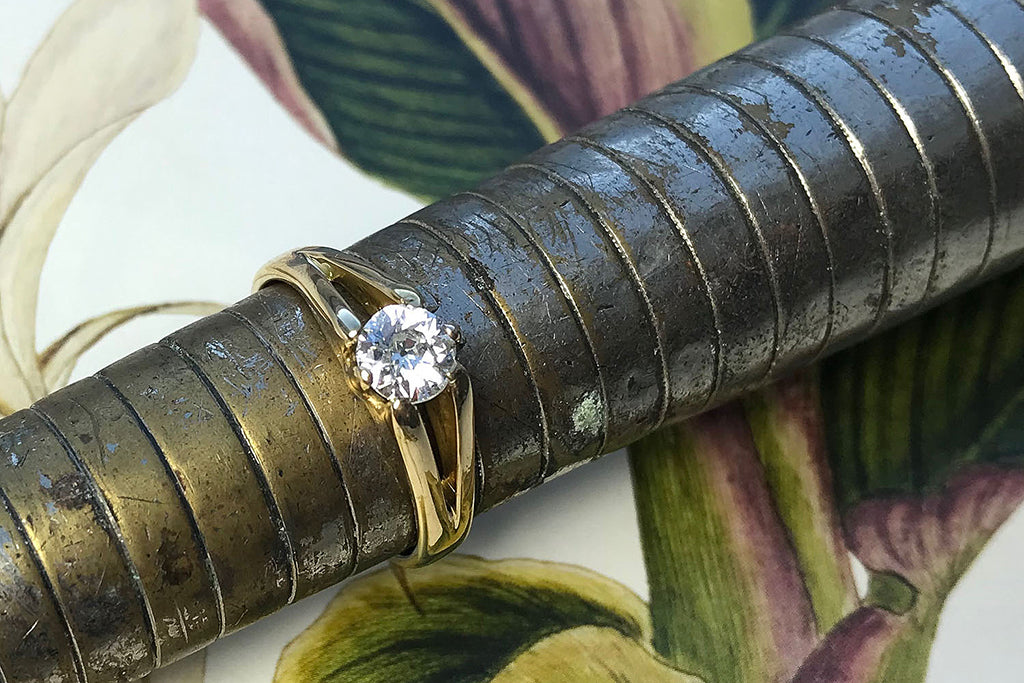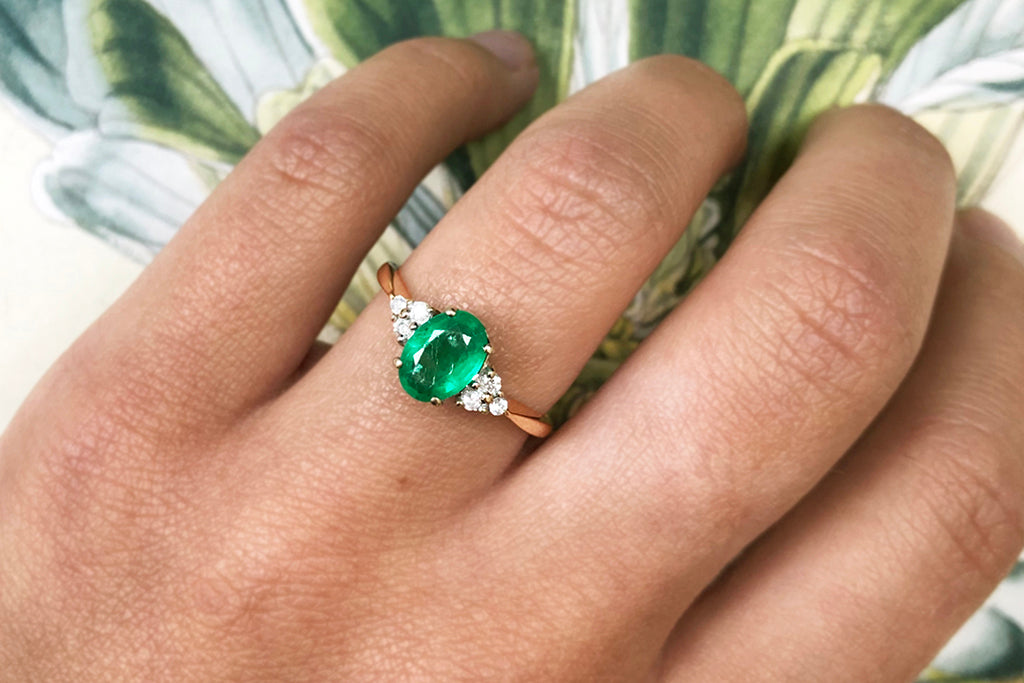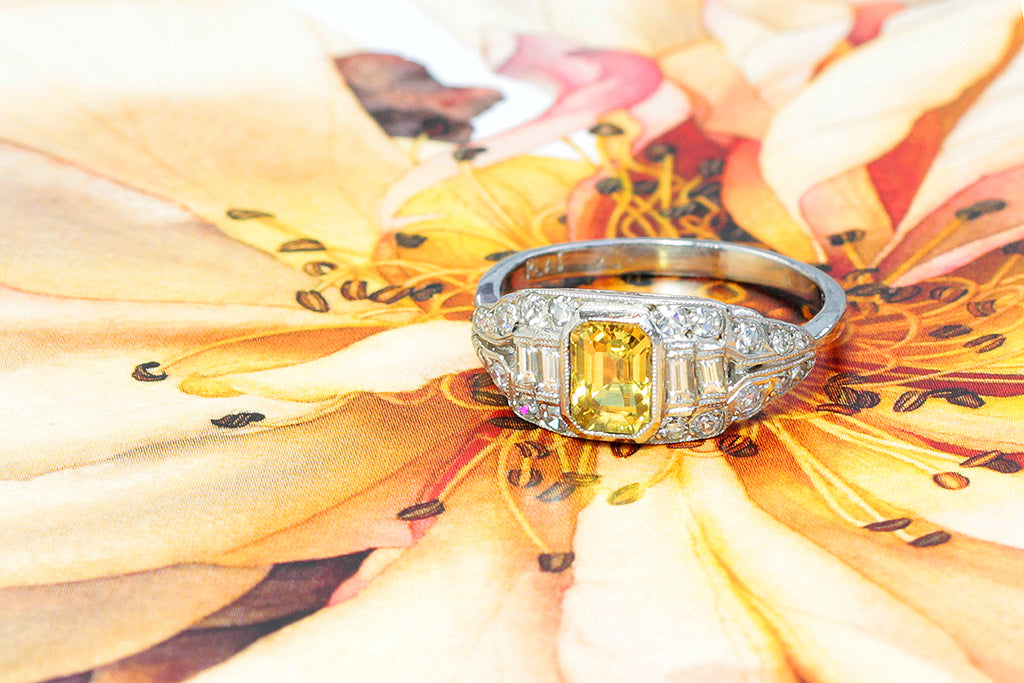
How to resize an antique engagement ring
You’ve decided you’re ready to propose and picked out the perfect antique engagement ring with which to open this exciting new chapter, but you’re unsure of your partner’s ring size. Don’t panic; it’s virtually impossible to guesstimate another person’s ring size without their finger to hand (if you’ll pardon the pun). Here at The Vintage Ring Company, we offer one free resize within the first year of purchase, enabling our clients to perfect the fit of their antique engagement ring once the question has been popped. If you’re shopping elsewhere, however, this blog post is your handy guide to having your antique engagement ring resized – properly.
PROPOSE FIRST

For the sake of structural integrity, we prefer not to resize any antique ring more than once. This is because most old rings have already been resized at least once in their lifetime, and repeated movement can cause a band weaken and thin over time. With this in mind, we always recommend popping the question with your antique engagement ring in its original size, then organising any necessary adjustments afterwards. That way, your partner and their ring finger can be present for the resizing process.
FIND A REPUTABLE ANTIQUE JEWELLER

If you didn’t source your antique engagement ring from a seller who offers resizes themselves, take time to find a jeweller who does, and specialises in antique jewellery. Pre-loved pieces - particularly those of bygone eras - have lived long and colourful lives. Rare materials, delicate details and bygone craft techniques are not uncommon of antique and vintage jewellery, and it’s for these reasons that it generally requires a little more care and specialist experience than contemporary pieces.
Ask for word-of-mouth recommendations from friends, family and antique dealers, and read customer reviews for an idea of expertise and reputation.
BOOK A CONSULTATION

Once you’ve established who will take care of your resize, book an in-person consultation with them and bring your ring along so the jeweller can examine it and determine if resizing is possible without compromising its design or structural integrity. Ring sizing systems can vary slightly from jeweller to jeweller, so having your ring to hand will also enable the jeweller in question to measure it in accordance with their margins.
Of course, a consultation is also an opportunity for your partner to have their ring finger measured up in person, which is by far the most reliable means of establishing a ring size accurately.
Depending on the extent of the resize, the design of your engagement ring and the materials present, resizing may involve stretching or compressing the band, adding or removing metal at the back (formally known as the shank), or adding sizing beads to the inside of the band. Your jeweller should explain these options and recognise which is most suitable for you.
THE RESIZING PROCESS: METAL ASSESSMENT

It’s feasible that you already know what your antique engagement ring is made from. Here at The Vintage Ring Company, every pre-loved engagement ring comes with a unique certificate of authenticity, proving that it’s been professionally assessed by a third party. Signed and stamped by The Goldsmiths’ Company, this certificate tells you everything you need to know about your vintage engagement ring, from the type of precious metal used to the quality of its gemstones. On the off chance you don’t have access to this information, your jeweller will need to identify whether your ring was crafted from gold, platinum, silver or other before embarking on the resize process. This verification may involve looking for hallmarks or employing a non-destructive testing technique.
THE RESIZING PROCESS: CONSIDERING THE GEMSTONE SETTINGS

If your antique engagement ring boasts gemstones secured in prongs, the jeweller should inspect them carefully. It’s very common for prong settings to degrade slowly over time, so it’s crucial to address any issues in the first instance to ensure the gemstones remain safe during the resizing process. If necessary, your jeweller should re-tip or repair any faulty prongs before doing anything else.
Whilst diamonds, rubies and sapphires are ‘cardinal’ stones that score impressively on the Mohs Scale of Hardness, gems such as emeralds, pearls and quartz are significantly softer. It’s perhaps for this reason that jewellers don’t tend to favour them for engagement ring designs in the contemporary context, but their popularity during the Victorian, Edwardian and mid-century eras makes them a regular feature of antique dress and cocktail rings. These jewels can be brittle and heat-sensitive in nature, so will probably need to be de-set for the purpose of the resizing process and replaced afterwards.
THE RESIZING PROCESS: PRESERVATION OF DESIGN ELEMENTS

A successful resize is one that addresses the fit of an engagement ring without compromising any of the design features that made you fall in love with it. A good jeweller will recognise the importance of maintaining original characteristics like hand-engraved patterns or old hallmarks – and will employ the necessary craftspeople to ensure that they live to tell the tale – but there is no harm in expressing how keen you are to hang onto these attributes.
Remember, the process and feasibility of resizing an antique engagement ring depend on its specific characteristics. To learn a little more about resizing and how many sizes you may be able to adjust your antique ring by, check out this blog post.


